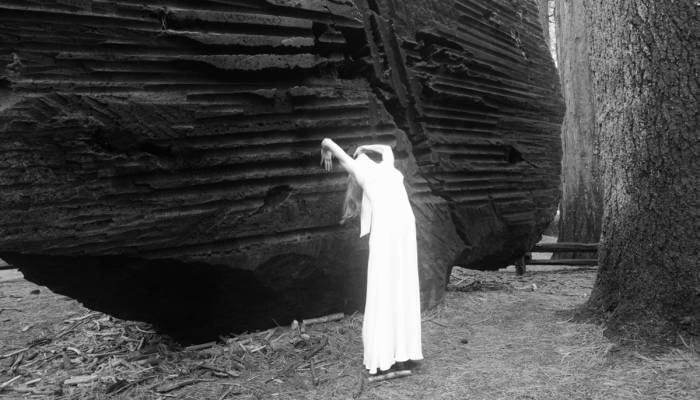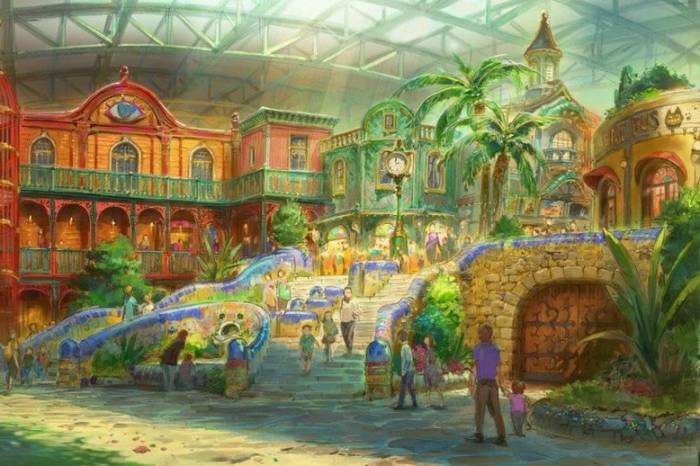Claude Monet’s Gardener (And His Immortal Paradise)
Who is to care for one of the world’s most famous and illustrious gardens?
The village of Giverny in Normandy is home to one of the most famous gardens in the world. Reproductions of this unlikely orchard inhabit a tremendous number of the world’s great museums as verdant treasures born from the head of a dazzling painter, Claude Monet. His home and gardens are visited, annually, by more than 500,000 people. And very few are unable to recognize the water lilies which Monet’s hands emblazoned, and which inhabited this very garden. But this is not the story (so many times told) of this Eden and its impressionist owner, but that of a man living today and in charge of caring for a still living legacy.
Upon entering Monet’s gardens, at the place where the artist lived the second half of his life, the first thing one sees is a charming pink country house with green shutters surrounded by beds of lavender, tulips, or sunflowers, depending on the season of the year. Crossing beneath a tunnel covered in vegetation, visitors find themselves in an oasis of weeping willows and bamboo and from which you can see a large pond –home to some of the most famous flowers in the world.
The place is so beyond comparison (both spatially and symbolically), such that today it’s a candidate for designation as a UNESCO World Heritage Site. This would not be so were it not for the work of Gilbert Vahé whose job is to keep alive not only the garden, but also the spirit and essence of one of the most spectacular of Western artists.
A thin man whose nails are full of earth, Vahé lives next to the Monet house, on a property with its own remarkable garden. He has worked on the painter’s former estate for more than 35 years, since he participated in its remodeling in 1977. The place had been under the charge of the painter’s son, Michel Monet, until he moved to Paris leaving the house and garden to its fate for some ten years. The initiative to revive what had been the artist’s house materialized thanks to the philanthropist and curator, Gérald Van der Kemp. He was known, among other things, for the restoration he’d done at the Palace of Versailles. Thus, Van der Kemp became director and curator of Monet’s house and the gardens were only completely revived with the arrival of Vahé, a career horticulturist who was born about 30 kilometers from the small town in Normandy.
Monet discovered the Giverny property in 1883 while hiking, and soon exchanged the streets of Paris for the Norman countryside. After acclimating to the little house and setting up his studio, Monet devoted himself to the gardens. He began by removing some trees and hiring a team of gardeners who helped him to plant plants brought from as far away as Japan. At first, Monet adopted gardening styles of the time, but he later developed his own style by planting geometric flower beds, installing arches covered with plants and creating, above all, specific lighting and coloration. After all, he was a painter.
Vahé thinks that this work was his destiny, although his own plans had been inclined toward orchid breeding. Completely restoring the gardens took about four years along with a team of gardeners, among them a man who’d worked with Monet himself in the gardens. On the other hand, Van der Kemp, who was also a painter and gardener, did research on which plants went where, based on the artist’s letters, photographs, the oral accounts of acquaintances and, of course, on the paintings. None of the plants which had inhabited that garden while the painter lived had survived and, when Vahé arrived there, the place was full of grass and weeds.
Today, Vahé works with a team of ten gardeners and some volunteers from French universities. While they start working at 7 a.m. and finish their shift at 1:30 p.m., the chief gardener says that his day normally ends at 8 p.m. His activities include watering, separating, and storing seeds and bulbs (which are brought from around the world), attending to production in the greenhouses, and even guiding visitors through the garden. But perhaps one of his most important tasks is determining the locations of the flowers according to their colors: those of light colors, such as yellow or white, are placed in the most shaded areas of the garden. The darkest flowers are placed in juxtaposition with the light ones. Another of his tasks is to create a certain density of vegetation around the central path of the garden to achieve moments in which the visitor is surrounded by plants, such that the sky is nearly invisible. This work shows that Vahé is, above all, a visual artist who has respected the memory of the legendary garden, and one who has given his own personal touch, somewhere between the wild and artificial.
For Monet, the garden was both his creation and his model. For Vahé, this garden is his life. In a recent interview, he said that, were he a millionaire, he would still use all of his money in the garden. In 1907, writer Marcel Proust described the gardens at Giverny as the “transposition of art” because, somehow, the gardens which had been the inspiration for some of the most famous works of art of the 19th-century had become art in themselves –and Gilbert Vahé is not only the gardener, but the guardian and re-creator of this very prodigious landscape.
Related Articles
When ancient rituals became religion
The emergence of religions irreversibly changed the history of humanity. It’s therefore essential to ask when and how did ancient peoples’ rituals become organized systems of thought, each with their
Larung Gar, the valley that is home to thousands of Buddhist monks
If we think about the monastic life it is very probable that we think about solitude, seclusion, silence and a few other qualities whose common denominator is the appropriate isolation for mediation
Dialogue with the Dalai Lama on science and spirituality
The Dalai Lama has been interested in science since he was a child. Over the years he’s visited many laboratories and has attended conferences that discuss consciousness from the scientific point of
A New Year's resolution for the earth
Worrisome quantities of waste are generated by human populations. Especially in cities, these have reached unprecedented and alarming levels. A largely uncontrolled practice, it affects everything on
The Dark Mountain Project: or how literature can confront ecocide
One impulse from a vernal wood May teach you more of man, Of moral evil and of good, Than all the sages can. Wordsworth, “The Tables Turned” (fragment) Words are elementary. The only reason we can
Are there no women in the history of philosophy?
Do only men philosophize? This could sound like a silly question, but if we quickly review the names of philosophers, from Aristotle to Slavoj Žižek, it would appear to be an exercise that is
Things that are about to disappear: photography as environmental conservation
Cristina Mittermeier is the founder of the International League of Conservationist Photography (iLCP), and is at the front of a modern movement to use photography with environmental purposes. Her work
Architecture And Music; An Affair That Acts On The Matter
A composition is like a house you can walk around in. — John Cage Perhaps music, more than the art of sound, is the art of time. That’s why its communion with space, and architecture, is so often so
Psycho-geography (On The Ritual Casting of a City)
Mrs. Dalloway walked down the streets of London guided by an “internal tide” that made her stop somewhere, enter a store, turn at the corner and continue her journey, as if she were adrift. La dérive
A Theme Park Inspired by Hayao Miyazaki is About to Open …
One of animation’s most spectacular exponents, Hayao Miyazaki, is the artist who transformed the direction of traditional animation forever.










